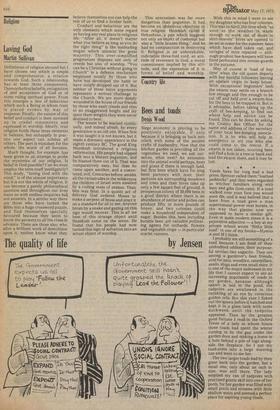Religion Loving God Martin Sullivan
Definitions of religion abound but I have chosen one which is simple and comprehensive: a relation towards God. Such a relationship has at least three components. There is the first belief in, recognition of and acceptance of God or of some ruling spiritual power. From this emerges a line of behaviour which such a Being in whom trust is placed evokes by way of response. Finally, the nature of this belief and conduct is then summed up in credal statements and expressed in worship. Ideally, true religion holds these three elements in balance, but unhappily in practice one aspect can subdue all others. The part is mistaken for the whole, the worst of all heresies.
Much thought, for example, has been given to an attempt to probe the mysteries of our religion. Is belief in God possible? Can we even employ the term itself intelligently? This study, "toying God with the mind," is of the utmost importance but it is not the whole of religion. It can become a purely philosophical question and throughout our lives leave us with endless enquiries but not answers. In a similar way there are those who have turned the Bible into a huge crossword puzzle, and find themselves specially favoured because they seem to know the answers to all the clues in advance. There are those also, who after a brilliant work of demolition upon it, neither know what they believe themselves nor can help the rest of us to find a livelier faith.
Conduct and behaviour are the only elements which some regard as having any real place in religious life. "After all, it doesn't matter what you believe as long as you do the right thing" is the misleading slogan which attracts the great majority. This over-simplified pragmatism disposes not only of creeds but also of worship. "You can be a Christian without going to Church" is a defence mechanism employed mostly by those who have not developed the habit or have simply dropped out of it. But neither of these naive arguments represents a serious challenge to the Church. We are more deeply wounded in the house of our friends by those who exalt creeds and rites to an exaggerated height and lay upon them weights they were never destined to bear.
The lesson to be learned continually, and indeed afresh, by every generation is an old one. When first it was taught it is not known, but it made a dramatic appearance in the eighth century BC. The good King Hezekiah introduced a religious reformation. His people had slipped back into a blatant paganism, and he blasted them out of it. That was comparatively easy, but then he came upon another, and a convoluted, evil. Centuries before, amidst all the vicissitudes in the wilderness the children of Israel were assailed by a coiling mass of snakes. Their bite was fatal. In a quaint act of delivery God ordered Moses to make a serpent of brass and erect it on a standard for all to see. Anyone bitten by a snake and gazing on this sign would recover. This is all we hear of this strange object until Hezekiah came on the scene. He found that his people had now turned this sign of salvation into an actual object of worship. This syncretism was far more dangerous than paganism. It had become an idolatrous objection to true religion. Hezekiah called it Nehushtan, a pun which suggests not only an object of contempt but also a "little brazen thing," and he had no compunction in destroying it. Religion is an unbreakable, indivisible three-fold cord, an attitude of reverence to God, a moral commitment implied by this attitude, and the expression of it in forms of belief and worship.


























 Previous page
Previous page